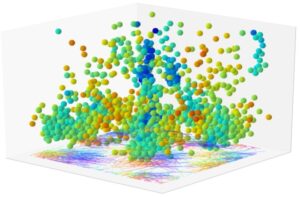Leadership
- Prof. Dr. Holger Stark, Technische Universität Berlin
- Prof. Dr. Markus Bär, National Metrology Institute, Berlin
The domain Dynamics, Statistical Physics, and Soft Matter covers a variety of fields ranging from conceptual research on non-equilibrium statistical physics, critical phenomena, quantum dynamics of condensed matter as well as nonlinear dynamics and pattern formation to physics of fluids, soft and active matter, glasses, and granular systems. Strong links to chemical and biological physics exist. The relevant length scales span the whole range from the atomic via the microscopic to the macroscopic regime. Theoretical approaches apply continuum models or dynamic field equations, for example, in describing hydrodynamics, as well as particle-based modeling using molecules in liquids or larger units such as colloids or motile cells in active matter. Our community shares common theoretical models and methods. Computational approaches and developing computational techniques are an integral part of our work. They play an important role and are pursued in research groups and larger research initiatives.


The amount of data produced during our simulations of complex processes is strongly increasing. Examples are full hydrodynamic simulations of pattern formation in micro-swimmers or the detailed modeling of parasites. Within the domain we aim to provide a platform for research groups and larger research initiatives to handle the growing demand for data management and program repositories based on the FAIR data principles and advise them accordingly. Based on the common features in our modeling and methods, we plan to introduce standardized data structures and meta data, which make our simulation data to be more easily shared between the groups.
Use cases
- DyStat01 Prof. Dr. Holger Stark
- DyStat02 Prof. Dr. Markus Bär
- DyStat03 Prof. Dr. Markus Bär
previous domain (Biological Physics) | domain list | next domain (Socio-Economic Physics)